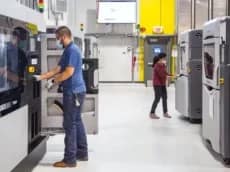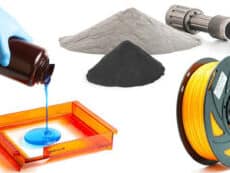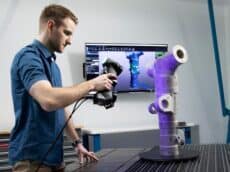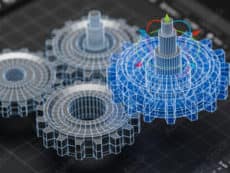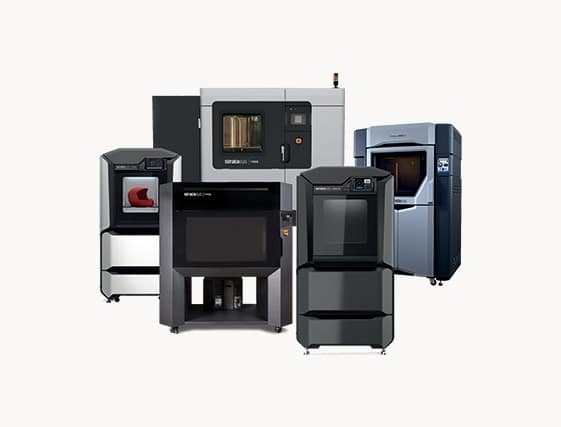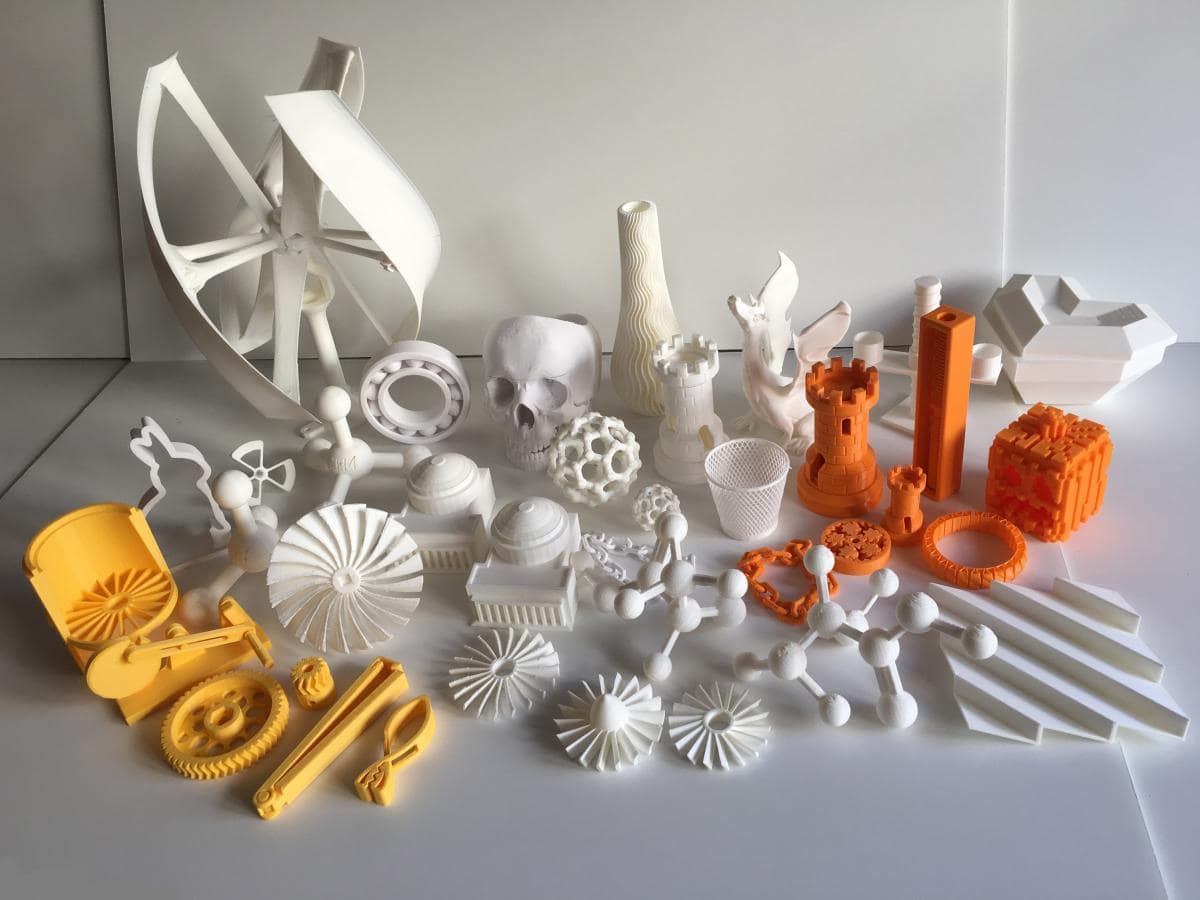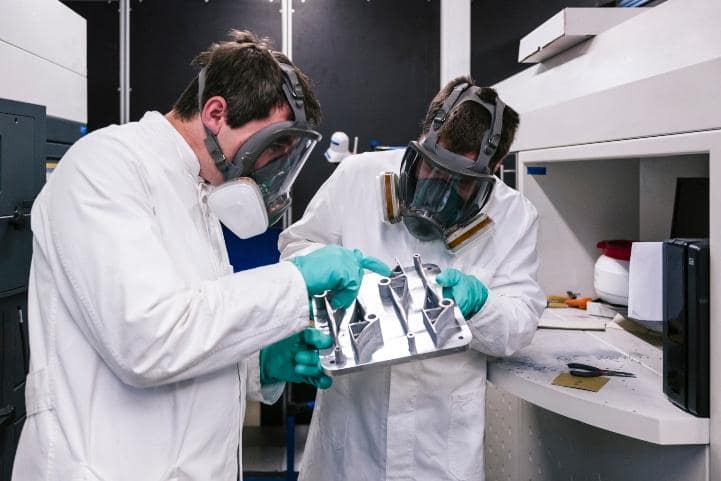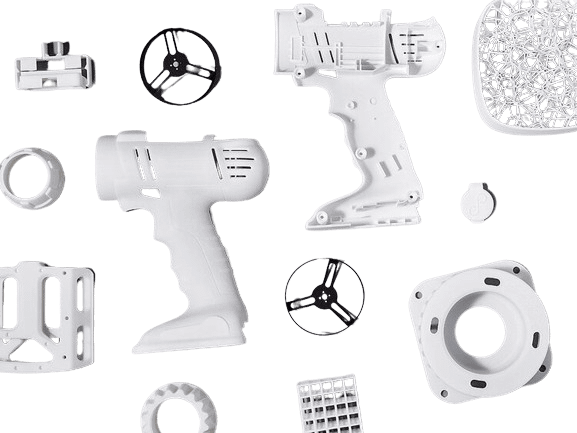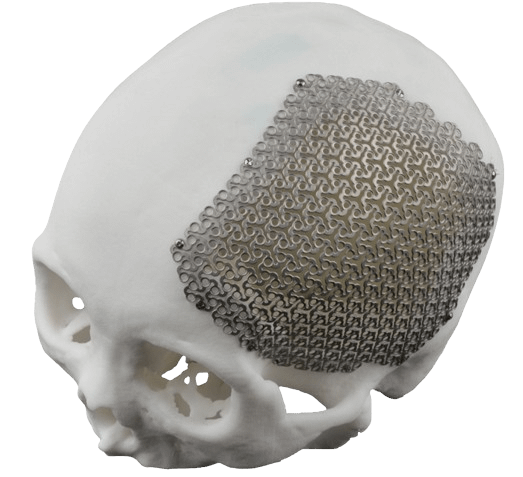The industrial sectors of AM
Find out how 3D printing is implemented in various production areas
Aerospace & Defense
The aerospace industry has a long history of using 3D printing technology to create complex or low-volume parts and custom tools. 3D printing offers a fast and efficient way to develop uniquely shaped components without investing in expensive molds and other single-use tools. Aerospace designers can create small batches of parts cost-effectively and on-site, allowing for faster feedback.
Biomedical and Surgical
The range of durable materials and customization possibilities make additive manufacturing advantageous for the development of medical devices, including customized products. Medical facilities can use 3D printers to bring device creation in-house, allowing for a better patient experience and quick service.
Automotive &
Motorsport
The versatility of additive manufacturing can help automotive manufacturers streamline and optimize the process of manufacturing parts. Aesthetic and functional prototyping can help designers accelerate the design of the final product. Companies are using the application of 3D printing for on-demand production that is perfect for producing small quantities.
Robotics and Automation
Additive manufacturing offers a huge competitive advantage in industries such as robotics and automation, acting as a disruptive strategy by reducing production time, increasing operational flexibility, and offering optimal parts and custom-designed products on demand.
Dental
Dental labs and practices use 3D printing technology to custom-produce devices, dental models, and surgical instruments. 3D printers digitize the process, eliminate labor-intensive steps, and speed up device delivery.
Mechanics
Additive manufacturing revolutionizes mechanical engineering processes by providing a more efficient and cost-effective way to produce complex parts and prototypes optimized in terms of strength, weight, and functionality, with better performance and reduced costs; It allows designs to be tested quickly, and leads to faster product development and time-to-market.
Moulds
3D printing is making waves in the injection molding industry. Traditional metal molds are known for their reliability, but they often come with high prices and long production times. In contrast, 3D printed molds are emerging as a cost-effective alternative, offering significant savings in both time and money.
Electronics
3D printing and electronics may still seem like a novelty, but the technology is poised to bring huge changes to the industry. Although the technology is still primarily used as a prototyping tool, the benefits of 3D printing – from faster time-to-market, greater design freedom, and customization – can be leveraged by the electronics industry.
Consumer Products
The diversified consumer goods sector includes sports equipment, cosmetics and eyewear. Additive manufacturing technology allows consumer goods companies to continuously improve designs in response to customer feedback and better respond to market demand.
Architecture and Furniture
With the advent of additive manufacturing, many studies have discovered the potential of this new technology, especially for model building. Thanks to additive manufacturing, it is now possible to build very precisely, with great detail.
Fashion & Design
The design freedom of 3D printing allows companies to experiment with innovative designs and create customized products that meet consumer needs.
Maritime & Naval
The maritime industry is experiencing transformative change thanks to emerging 3D printing technologies. Traditional boat manufacturing processes, characterized by significant costs, long lead times, enormous waste and design limitations, are gradually being replaced by innovative solutions that harness the potential of additive manufacturing.
Veterinary
Due to its versatility, 3D printing in veterinary medicine is used for a wide range of applications. In veterinary prosthetics and orthoses, 3D printing is primarily used for the development of bone structures, complex implants, and surgical guides.
Oil & Gas
The oil and gas industry is a crucial economic sector, but it faces many difficulties operating in remote areas. With the introduction of 3D printing technology in the petrochemical industry, these issues are becoming easier to manage, and as a result, the entire industry is transforming.
Transport
All types of rail vehicles require precision-designed and tested parts made from certified materials. 3D printing; It enables rapid prototyping, tooling and spare parts for the production of wear parts according to industry standards: it allows you to implement improvements that result in significant time savings and a reduction in material maintenance costs.

